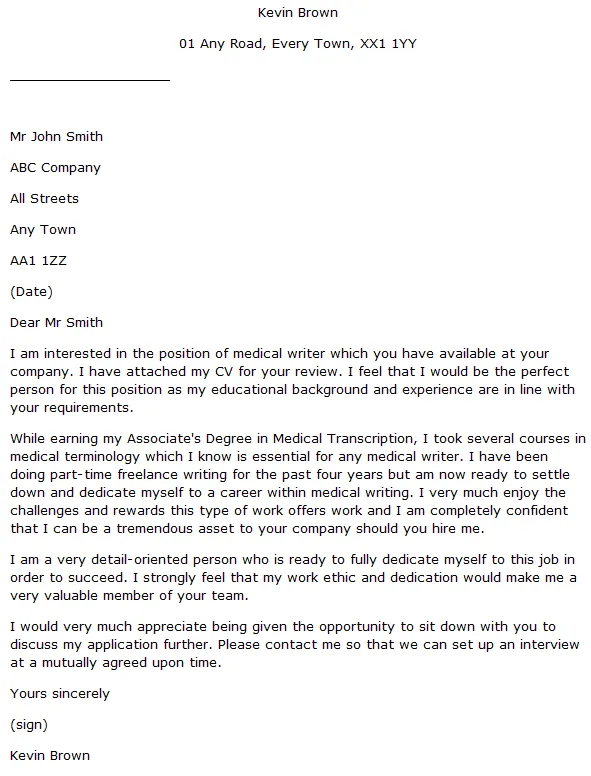Understanding the Importance of a Cover Letter
In the competitive field of medical writing, a well-crafted cover letter can be your golden ticket to landing a job. It serves as your first impression, allowing you to introduce yourself, showcase your skills, and demonstrate your enthusiasm for the position. Unlike a resume, which provides a static overview of your experience, a cover letter gives you the opportunity to tell a story, explain your career goals, and highlight why you are the perfect fit for the role and the company. It’s a chance to connect with the hiring manager on a more personal level and leave a lasting positive impression. Neglecting this crucial step can significantly decrease your chances of getting your resume considered. A strong cover letter is an essential component of a successful job application package.
Highlighting Your Medical Writing Skills
Your cover letter should be a showcase of your medical writing skills. This is where you emphasize your expertise in areas such as scientific accuracy, clarity, and conciseness. Highlight your proficiency in various writing formats, including clinical study reports, regulatory documents, manuscripts, and patient-facing materials. Mention specific software or tools you are familiar with, such as referencing software, statistical analysis tools, or medical terminology databases. Detail any certifications, courses, or workshops you have completed that demonstrate your commitment to professional development in medical writing. Providing concrete examples of your work, such as successful projects or publications, can further strengthen your application and set you apart from other candidates. Remember to tailor your skills to match the requirements listed in the job description.
Showcasing Relevant Experience

Your cover letter is the perfect platform to highlight your relevant experience. Instead of merely listing your previous roles, use this space to describe your accomplishments and how they align with the job requirements. Quantify your achievements whenever possible, such as the number of documents you’ve written, the size of clinical trials you’ve supported, or the improvement in readability scores you’ve achieved. Focus on experiences that demonstrate your ability to handle the responsibilities outlined in the job posting. Briefly describe the projects you’ve worked on and the impact your contributions had on the project’s success. Emphasize any experience working within the pharmaceutical, biotechnology, or medical device industries, as this often highly valued. Remember to align your experiences with the specific needs of the prospective employer.
Tailoring Your Cover Letter
One of the most crucial aspects of a compelling cover letter is its ability to demonstrate that you’ve tailored it specifically for the job and the company. Generic cover letters are easily spotted and often dismissed. Before you start writing, research the company thoroughly, including its mission, values, and recent projects. Identify the specific skills and experiences that the employer values most and make sure to highlight those in your letter. Use the language from the job description to show that you understand their requirements. Personalize your letter by mentioning specific aspects of the company or the role that interest you, such as their innovative research or commitment to patient care. A tailored cover letter clearly demonstrates your genuine interest and dedication, significantly increasing your chances of success. Always proofread for company names and job titles to ensure you are matching the roles.
Key Sections to Include in Your Cover Letter
Header and Contact Information
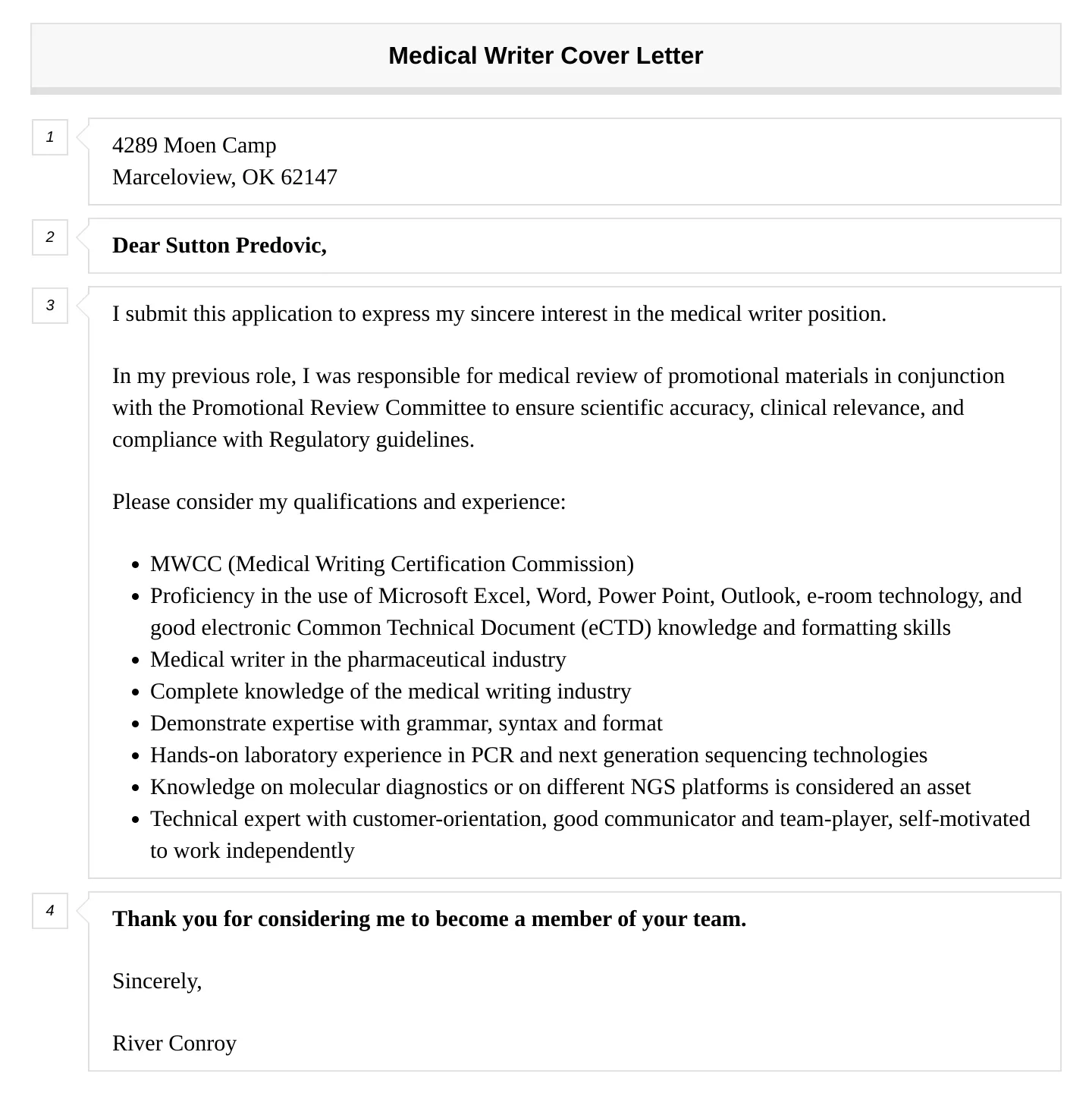
Your cover letter should begin with a professional header that includes your full name, address, phone number, and email address. Ensure that your contact information is up-to-date and easily accessible. If you have a professional online presence, such as a LinkedIn profile or an online portfolio, you may also include the link. This information should be clearly formatted and easy to read. The header sets the tone for the entire letter, conveying professionalism and attention to detail. It also provides the hiring manager with the necessary information to contact you promptly.
Professional Greeting
The opening of your cover letter is a great time to make a positive impression. Start your letter with a professional greeting, such as “Dear Mr./Ms./Dr. [Last Name],” if you know the hiring manager’s name. Addressing the hiring manager directly shows that you have done your research and taken the time to personalize your application. If you are unable to find the hiring manager’s name, consider using a professional greeting like “Dear Hiring Manager” or “Dear [Department Name] Team.” Avoid generic greetings like “To Whom It May Concern,” as they can make your letter seem impersonal. Your greeting should be followed by a colon and should set a positive and professional tone for the rest of the letter.
Body Paragraphs
The body of your cover letter is where you provide detailed information to support your application. This section should be divided into a few well-structured paragraphs. It’s where you provide the details around your skills, experiences, and motivations for applying for the job. Here is where you will express your passion for medical writing, and the specific reasons you are interested in the role and the company. Each paragraph should focus on a specific aspect of your qualifications and should provide compelling reasons why you are the ideal candidate. It is crucial to keep your body paragraphs concise, clear, and focused. Focus your letter on your experience related to the role you’re applying for.
Opening Paragraph
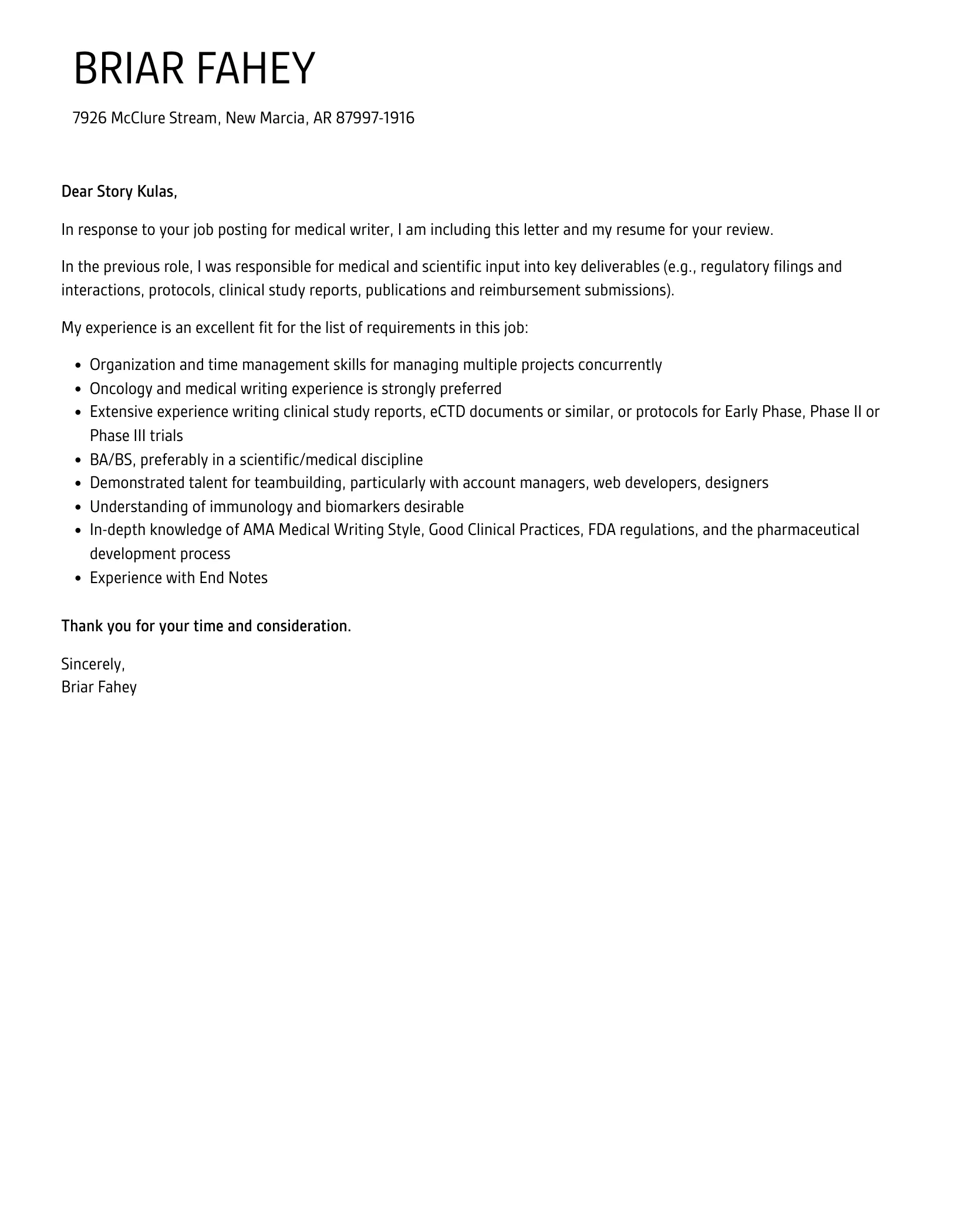
Your opening paragraph should immediately capture the hiring manager’s attention. State the position you are applying for and how you learned about the opportunity. Briefly explain why you are interested in the role and why you are a good fit. You can also briefly mention a key skill or experience that makes you stand out. Keep your opening paragraph concise and engaging, setting the stage for the rest of your letter. Avoid using generic phrases or cliches. Aim to create a strong first impression that encourages the reader to continue reading.
Middle Paragraphs
The middle paragraphs of your cover letter are your chance to provide more detail about your qualifications. Here you will provide detailed information about your writing skills and experience. Focus on the key skills and experiences mentioned in the job description, and use examples from your work history to support your claims. Be specific, providing quantifiable results whenever possible. Tailor these paragraphs to the specific requirements of the job and the company’s values. Demonstrating how your skills and experiences align with their needs is essential to highlight your suitability for the role. Show that you can perform the tasks and fit into the company’s culture.
Closing Paragraph
In your closing paragraph, reiterate your interest in the position and thank the hiring manager for their time and consideration. Express your enthusiasm for the opportunity and state your availability for an interview. Reiterate your desire to discuss your qualifications further and provide your contact information again. Ensure your closing paragraph is concise, professional, and leaves a positive final impression. End by expressing your thanks and a call to action. For example, you can mention that you look forward to hearing from them soon.
Formal Closing and Signature
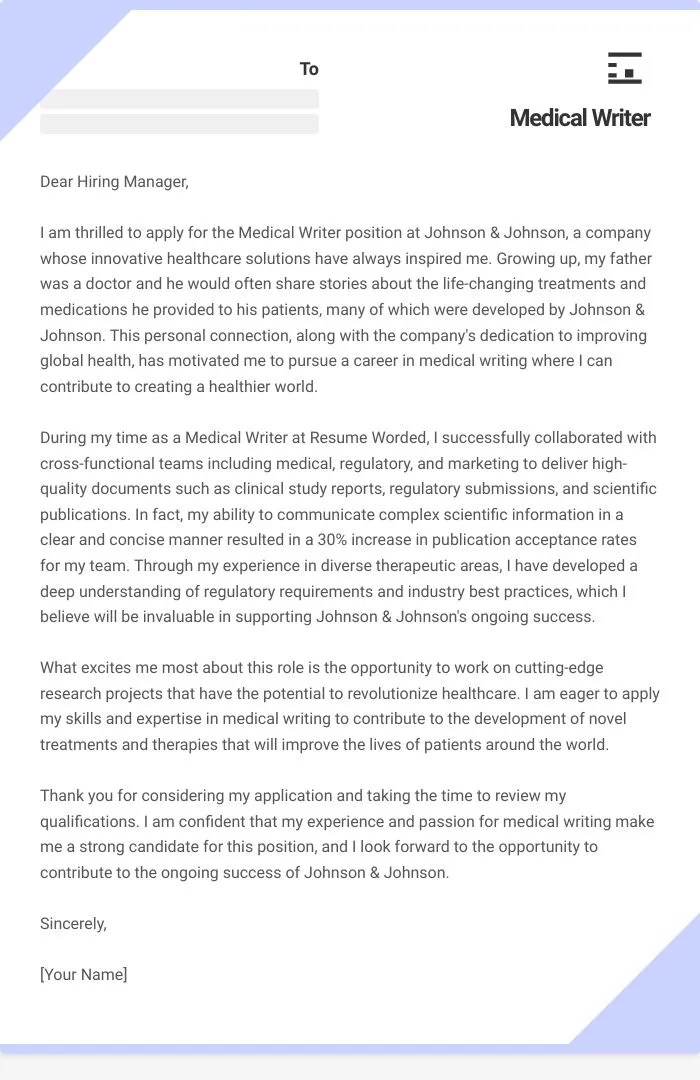
Conclude your cover letter with a professional closing, such as “Sincerely,” “Best regards,” or “Respectfully.” Avoid overly casual closings. Below your closing, leave space for your signature. If submitting a digital cover letter, you can type your name. If printing your cover letter, sign your name above your typed name. This adds a touch of professionalism and authenticity to your application. Make sure to sign neatly and legibly to ensure your application looks professional. Your signature should be clear and professional.
Formatting Your Cover Letter for Impact
The formatting of your cover letter is just as important as its content. A well-formatted letter is easier to read and more visually appealing, making a positive impression on the hiring manager. Pay attention to the layout, font, and overall appearance of your letter to ensure that it is professional and easy to read. Use formatting to highlight your key points, break up long blocks of text, and emphasize your qualifications. Clear formatting can set you apart from other applicants and make a significant difference in how your application is received.
Choosing the Right Font and Size
Choose a professional font, such as Times New Roman, Arial, or Calibri. These fonts are easy to read and widely accepted in professional settings. Maintain a consistent font size, typically between 10 and 12 points. Ensure that your font choice reflects professionalism. Avoid using overly stylized or difficult-to-read fonts. This will ensure your letter is easy to read. The font should be standard and appropriate for a professional communication. Make sure your font is readable, so the hiring manager can easily review your application.
Using White Space Effectively

Use white space to break up text and improve readability. Include sufficient margins on all sides of your letter. Use single or 1.15 line spacing to give your content room to breathe. Avoid large blocks of text; instead, break up paragraphs into shorter, more digestible sections. White space helps to guide the reader’s eye and makes it easier to scan your letter for key information. Use white space to visually separate different sections of your letter, such as the header, greeting, body paragraphs, and closing. Proper use of white space enhances the overall aesthetic appeal and professionalism of your cover letter. Ensure that the spacing is consistent and visually pleasing.
Proofreading and Editing
Thorough proofreading and editing are essential before submitting your cover letter. Errors in grammar, spelling, or punctuation can create a negative impression and undermine your credibility. Carefully review your letter for any mistakes, or use a grammar and spell checker. Read your letter aloud to identify any awkward phrasing or unclear sentences. Have a friend or colleague review your letter for a fresh perspective. Ensure that all company names, job titles, and contact information are accurate. Proofreading your letter will provide an extra layer of protection. Be sure that your tone is professional, and your letter is free of errors.
Tips for a Successful Cover Letter
Crafting a successful cover letter involves more than just listing your qualifications; it requires strategy, attention to detail, and a genuine desire to connect with the hiring manager. Remember to tailor your letter to the specific job and company and present yourself in the best possible light. Your application will greatly benefit from this additional attention to detail. These tips will help you make a positive impression on potential employers and improve your chances of landing your desired job.
Researching the Company
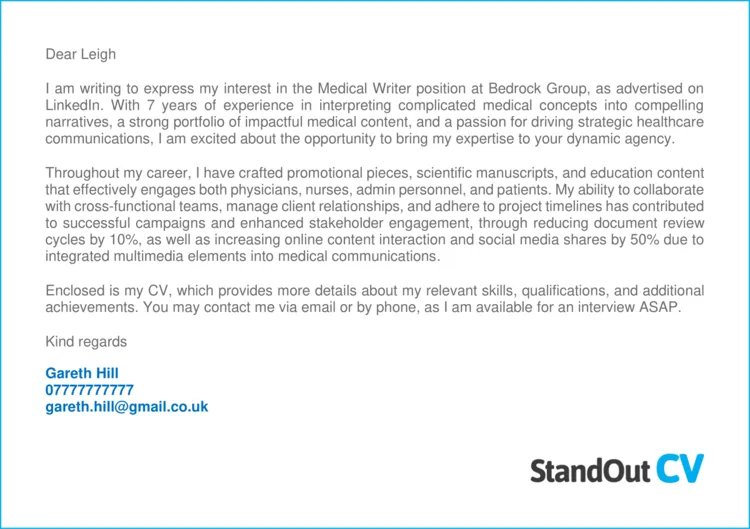
Before writing your cover letter, take the time to research the company thoroughly. Visit their website, read about their mission and values, and learn about their recent projects and achievements. Look for the latest news or press releases to stay up-to-date. This will give you a good understanding of the company’s culture and priorities, allowing you to tailor your letter to their specific needs. Demonstrating that you understand the company’s goals and challenges demonstrates your interest in the role. Mentioning specific aspects of the company, such as their innovative research or commitment to patient care, will show that you’ve done your homework. Your research will also help you determine whether your skills and experience align with the job requirements.
Quantifying Your Achievements
Whenever possible, quantify your achievements in your cover letter. Using numbers and statistics to demonstrate your accomplishments. Instead of simply saying you improved a process, state that you reduced errors by a specific percentage or decreased turnaround time. Quantifiable achievements are more impactful and provide concrete evidence of your capabilities. Providing specific numbers to support your claims will also provide proof. For example, if you managed a project, state the budget or the number of people involved. Quantifying your achievements adds credibility to your claims and helps the hiring manager understand the value you would bring to the role. This makes a great impression on the hiring manager.
Focusing on the Employer’s Needs
When writing your cover letter, shift your focus from what you want to what the employer needs. Highlight your skills and experiences that are most relevant to the job description. Tailor your letter to the specific requirements and keywords mentioned in the job posting. Demonstrate how your qualifications align with the employer’s needs and explain how you can contribute to their team. Instead of simply listing your achievements, explain how they relate to the job and how they will benefit the company. Frame your experience as a solution to the employer’s needs. Your cover letter should be centered on what you can do for the company rather than focusing solely on your personal career goals. This shows that you are a strategic candidate.
Examples of Strong Cover Letter Phrases
Using strong, impactful phrases can make your cover letter more compelling and memorable. Words and phrases that highlight your skills, experience, and enthusiasm will showcase your suitability for the role. Use active language and avoid generic or passive phrases. Here are some examples of strong phrases you can use. The words you use have a great impact. Using them correctly can give you an edge in the hiring process. Consider adding some to your letter for a more positive effect.
Demonstrating Your Passion for Medical Writing
Expressing your passion for medical writing is crucial for conveying your interest and enthusiasm. Use phrases that show you are committed to the profession, such as “I am passionate about clear and concise medical communication.” You can also highlight specific aspects of medical writing that interest you, such as regulatory writing or medical education. Mentioning how you enjoy the challenge of translating complex medical information into accessible language will show your dedication. Demonstrating your passion can help you stand out from other candidates. Passion is a critical element to winning a job. Show that you love the work and are willing to contribute.
Expressing Your Enthusiasm for the Opportunity
Express your enthusiasm for the specific opportunity. Use phrases that convey your excitement, such as “I am eager to contribute to your team” or “I am excited about the opportunity to work on [specific project].” Mentioning the company and the role demonstrates your interest in the role. Show that you want the job by using the right phrases. Your enthusiasm will make your application stand out. Be specific, stating your interest in the role and the company and expressing your excitement about the opportunity to learn and grow.
Mentioning Specific Projects or Skills
Highlight the skills or experience that directly match the job requirements. For example, “My experience in writing clinical study reports aligns well with the requirements.” Also be sure to make mention of specific projects or publications you have worked on. Mentioning projects and skill sets will give you credibility. Your use of words will give the hiring manager a good understanding of your skills. Your cover letter should be an accurate reflection of your abilities and qualifications. Specifics are far more effective than generalities, so use those to your advantage.
